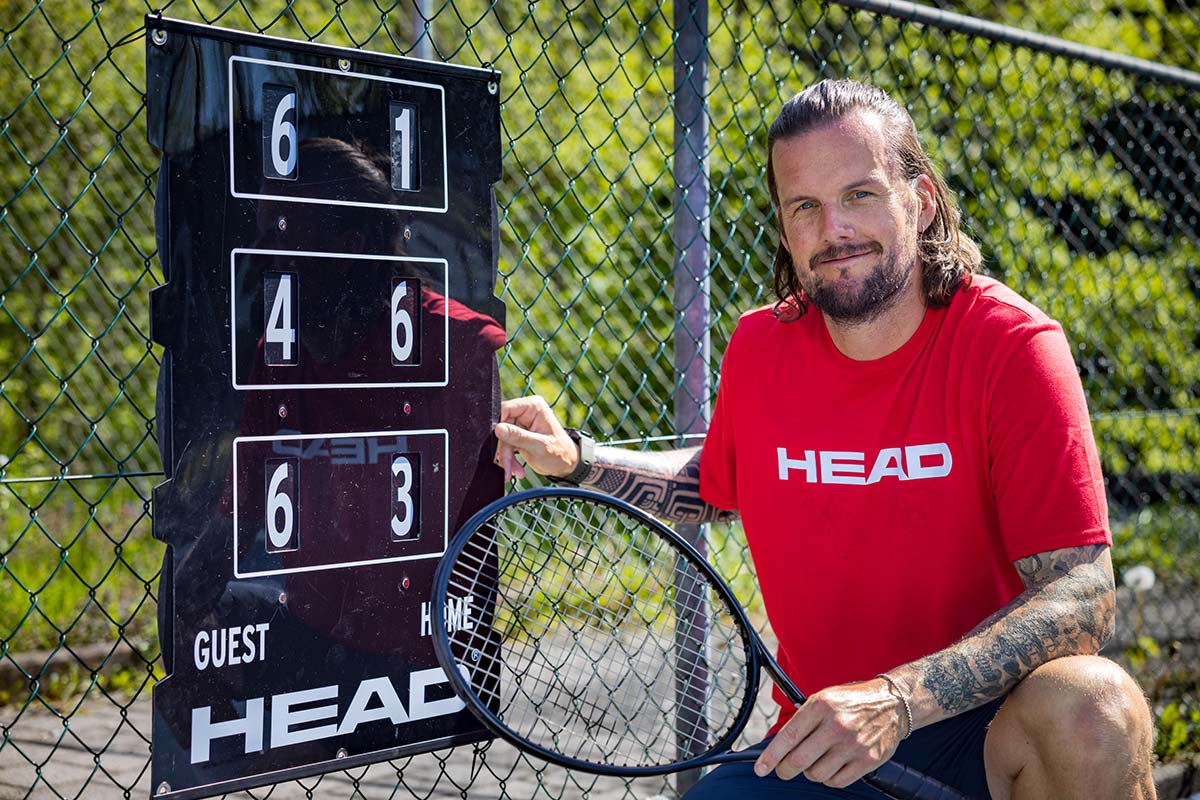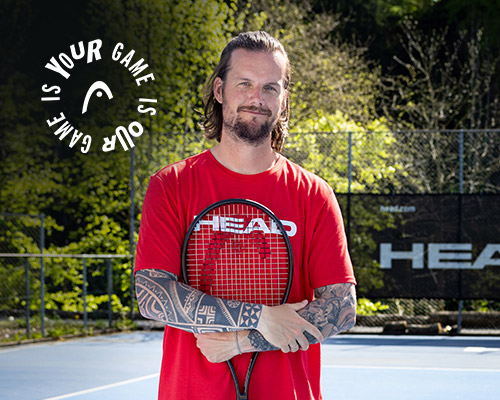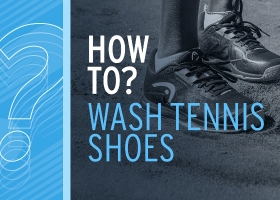How to play tennis
Tennis is a game for everyone— a sport many considered suited for 8-year-olds to 80-year-olds. It’s unique in that it can satisfy equally the inclinations of someone who is very fit or of someone with extreme physical limitations.
At high levels, tennis, which many compare to boxing and chess for its physical and tactical requirements, can be one of the most exhausting and athletically demanding sports—yet it is common to see an older group of players enjoying a leisurely game of doubles. For a more vigorous player, the sport involves sprinting, side-to-side movement, and quick changes of direction, so it can be an effective cardio workout and help develop balance and athleticism.
How Do You Play Tennis?
Although the modern game of tennis originated in England in the late 19th century, which was then known as “lawn tennis,” the object of the game has remained largely the same. The sport takes place on a tennis court, a rectangular surface outlined with white lines that define the area where balls are allowed to land.
A net stretches across the court, dividing it into two mirroring sections. In singles play, two individual players (or in doubles, a team consisting of two players) on opposite sides of the tennis court strike a rubber ball covered in bright yellow felt with racquets over the net towards one another. The mission is for one player to win points by hitting the ball over the net so the opposing player isn’t able to return it back over the net or inside the lines of the court.
What are the lines on a tennis court?
The names of the lines are the service line, the center service line, the baseline, the singles sidelines, the doubles sidelines, and the center mark. The doubles sidelines are only applicable for doubles play. In singles play, the ball must land inside the rectangle outlined by the baseline, the singles sidelines, and the net. In doubles play, the doubles sidelines are used instead of the singles sidelines.
What equipment do I need to play tennis?
Tennis doesn’t require a lot of equipment. But a player needs three main things.
First, a player needs a racket. There are a lot of racquets brands in the market and choosing a racket can be a challenge. Many players consult their local pro shop for guidance or they demo, which in means trial, racquets until they find the best option that suits their style of play.
Second, a player needs shoes specifically for tennis, which is constructed differently from running shoes or basketball shoes. Typically, tennis shoes are made lower than most sports-specific shoes with traction in the soles that allow the player to move in different directions quickly and prevents ankle injuries. Lastly, a can of tennis balls are needed, some are now made from recycled materials.
The Basic Rules of Tennis
The scoring system used in tennis can seem confusing, but it is intuitive. A player’s goal is to accumulate enough points to win games, accumulate enough games to win sets, and ultimately accumulate enough sets to win a match. To win a match, one player must win a certain number of sets—usually two, but sometimes three. Some players or tournaments may decide to have matches determined by only one set, depending on scheduling or organizational need (this does not happen in professional tournaments that you would see on TV).


A set is won by having won six games (though occasionally tournaments might use an alternate number of games to win a set, such as four or eight). It is important not to confuse the term “game” with the term “match.” To win a game, a player must basically win four points.
However, if the players are tied at three points each, the score becomes “deuce.” At deuce, the game becomes a tug of war. Winning a point at deuce grants the “advantage” to a player, and winning a point with the “advantage” wins the game.
If a player gains the advantage and then loses the next point, the score returns to deuce. So in order to win the game from deuce, a player must win two points in a row. When the serving player has the advantage, the score may be called “ad in,” and called “ad out” when the returning player has the advantage.
Sometimes tournaments will use a “no-ad” scoring system. In this system, a game is won simply by whoever first wins four points—at deuce, a sudden death point is played. In order to differentiate the scoreline of games in the set from the scoreline of points within the game, “15” is used to mean one point, “30” to mean two points, and “40” to mean three points. At 40-40, the score is called deuce. When a player has no points, it is written as “0,” but called “love.”
The server’s score is always called first. For example: if the server has won one point in this game, and the returner has won two points, the score will be called 15-30. If the server has won three points and the returner has not won any, the score will be called 40-0, which sounds like “Forty-Love.”
How do you start a match?
To begin a match, the question of who serves first must be decided. In pro tournaments, this is done with a coin flip. Amateur players may use whatever method they like—a common method is for one player to spin their racket and the other to guess whether the logo on the butt of the handle will be facing up or down. Whoever wins the flip may decide whether to serve or return first, and the other player may then choose on which side of the net to start playing the match.
The winner of the flip may instead choose to pick a side, and then the other player will choose whether to serve or return. It is a little-known rule that, as another alternative, the winner of the flip may force the other player to make the first choice. This is rarely done. Once the match begins, players alternate serve between every game. That is, one player serves for an entire game, then the other player serves for the next full game, and so on.
How does the point start?
The match starts at 0-0. A point begins when the server, naturally, serves the ball. For a serve to be considered “in,” it must land inside the service box diagonally across from the server’s position. For each point, the server is allowed two attempts at serving. If both are missed, it is called a “double-fault” and the server loses the point.
To explain the server’s position at the beginning of a point, let us examine the court. It is of course divided by the net into two sides. Each side is divided in half again by the center line into two more sides, the deuce, and the ad side. So if a court has a North Side and a South Side separated by the net, there is a deuce side and an ad side North of the net, and a deuce side and ad side South of the net that are diagonal across from their Northern counterparts.
The North deuce side is to the right of the center line from the perspective of the player on the North side, and the North ad side is to the left of the center line from the perspective of the player on the North side. The first point of a game is always served from the deuce side, which means that the server has to stand on the deuce side of the court, behind the baseline, and serve the ball into the deuce service box on the other side of the net.
Once the serve has landed in, the returner tries to hit it back anywhere inside the lines of the court (i.e. the service box no longer matters), and if that ball lands in then the point may begin in earnest, with both players trying to hit the ball across the net and inside the lines of the court. A player loses the point when the ball bounces twice on their side of the net, or when they hit the ball outside of the lines. The ball does not have to bounce before it is hit.
A ball that lands touching a line, even if just barely, counts as in. The player’s position when hitting the ball does not affect whether the ball is in. If a player touches the ball with any body part after the point has begun, that player loses the point. A player who reaches across the net to hit a ball or who touches the net at all during a point also loses the point.
Do I have to join a fancy club to start playing tennis?
Although tennis has the advantage of only requiring two people to play, it can only be played on a tennis court. Although it may have the reputation of being a “country-club sport,” there are actually many public courts depending on where one lives. In rural areas, it is rarely difficult to find an open court nearby—they are often on school campuses or in parks. In cities, the public courts can be more difficult to reliably play on because there are limited availability of tennis courts for the amount of people who want to play. But if there are available courts, they are either free, require a city permit, or cost a fee for people to use them.
Can you score in tennis without serving?
In tennis, a player who is serving a ball is called the server, and the player receiving the ball is called a receiver. Although the server starts the point and theoretically has control, the receiver can score points too. For instance, if a server hits two consecutive serves that don’t go over the net or go out, that is considered a double fault and the receiver scores a point. When the server hits the net but the ball goes over it that is considered a “let,” which means the server has to redo the server with any player winning a point. After the server delivers a serve successfully, but commits an unforced error or cannot return a ball in play during a rally, the receiver wins a point. If the receiver accumulates enough points to win a game, the receiver is considered to have broken the server’s serve.
How do I know if I have a good tennis racket?
There are so many rackets in the market and each offers different benefits and functionalities. But generally, whatever racket a player chooses, should help a player enhanced their strengths and play their game style with confidence.

















